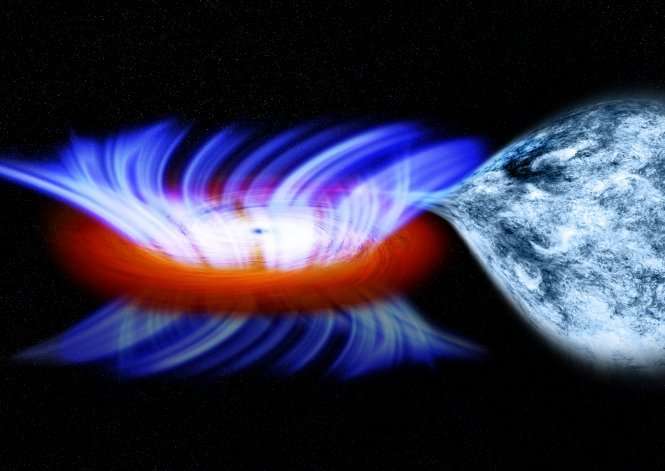Best of Last Week: Stupendously large black holes, a squid-inspired robot and smartwatches detecting COVID-19

It was a good week for space science as a trio of researchers from Queen Mary University of London, Ludwig-Maximilians-Universität and the University of Amsterdam found that black holes could reach "stupendously large" sizes. Bernard Carr, Florian Kühnel and Luca Visinelli suggested some black holes could be primordial, indicating that they could grow larger than previously thought. Also, Physicist Pekka Janhunen with the Finnish Meteorological Institute proposed that a human-populated mega-satellite orbiting Ceres could be a way to establish a human presence in space. And a team at Université de Montréal found a "super-puff" planet like no other—the core mass of the giant exoplanet WASP-107b is lower than what was thought to be needed to envelop giant planets.
In technology news, a combined team from the University of Edinburgh and the University of Southampton built a squid-inspired robot that can swim with nature's most efficient marine animals. Also, a team at Pennsylvania State University developed an inexpensive battery that charges rapidly for electric vehicles and may thus reduce range anxiety. And the team behind the Brave browser issued an update adding the peer-to-peer IPFS protocol as a way to combat censorship, making it possible to transfer files without using dedicated servers. Also, a team at Rensselaer Polytechnic Institute announced the creation of pFoodReQ, a system that can recommend recipes tailored around the preferences and dietary needs of individual users.
In other news, a team at Sloan Kettering Institute solved a 100-year-old cancer mystery—they found that the Warburg effect was due to a previously unknown link between Warburg metabolism and the activity of an enzyme in the cell. Also, a combined team from the International Centre for Radio Astronomy Research and the University of Western Australia achieved a record-breaking laser link that could provide a test of Einstein's theories.
And finally, a team at the Icahn School of Medicine at Mount Sinai found that smart watches can detect symptoms of COVID-19 before the wearer knows they are infected.
© 2021 Science X Network